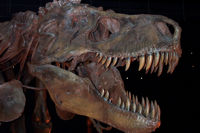


 |
 |
 |
|
It takes a lot of dedication to be a wildlife photographer. While you can go out into the woods and randomly get nice wildlife shots, you'll need to do a lot more to get a collection of the less common denizens of the wilds. A wildlife photographer is forced to study the habits and life of his subject, as well as their environments, to get a full picture of the animal in question. And with all that, there is a lot of waiting, and a lot of frustration, since you never know if or when a wild animal will come or go. The best friend of a wildlife photographer is a powerful telephoto lense. 600mm is ideal for birds. For larger animals, you can make out with a 300mm, but you will still have to learn stealth to get decent shots. Traditional wildlife photographers stuck with slide film. Some of the most vivid wildlife images have come from 25-64 ISO slide film. The digital photographer will want to use the lowest possible ISO setting as he can get away with so as to ensure high detail in photos. Copyright © 2002 by Shawn Olson. All rights reserved. To get permission to use text or any of these images, send an email to shawn@shawnolson.net. To return to the home page, go to www.shawnolson.net |
 |
 |
 |
 |
 |